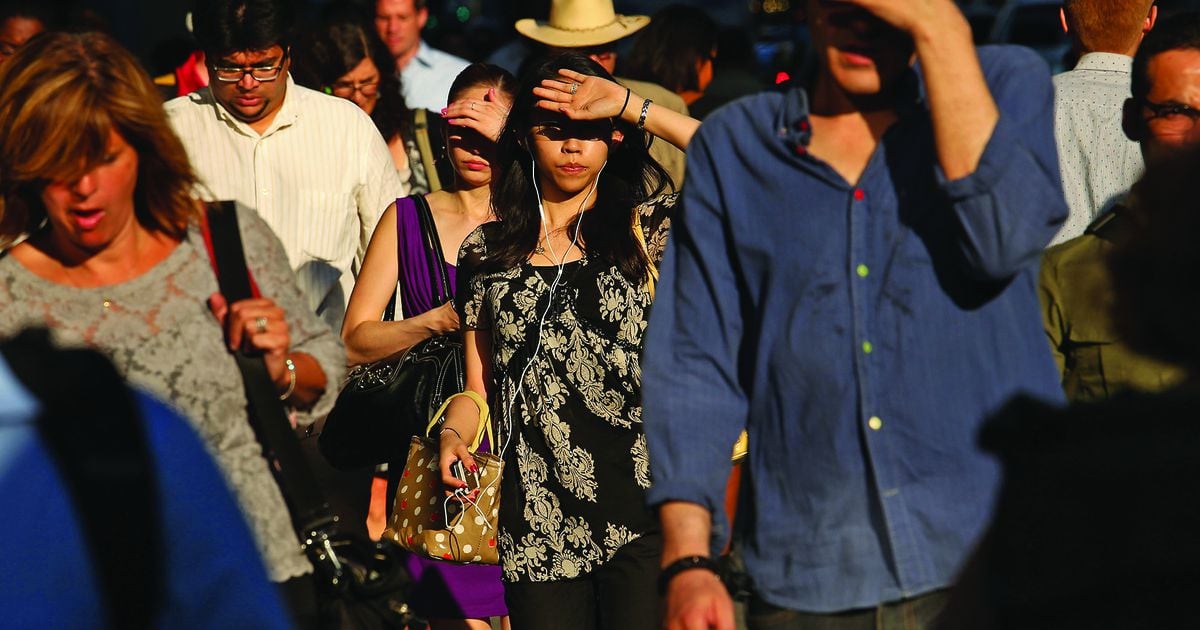Opinion: We don’t see what climate change is doing to us
Opinion: We don't see what climate change is doing to us Salt Lake Tribune


The Hidden Costs of Climate Change: A Report on Sustainable Development Goals

Many of us realize climate change is a threat to our well-being. But what we have not yet grasped is that the devastation wreaked by climate change is often just as much about headline-grabbing catastrophes as it is about the subtler accumulation of innumerable slow and unequal burns that are already underway — the nearly invisible costs that may not raise the same alarm but that, in their pervasiveness and inequality, may be much more harmful than commonly realized. Recognizing these hidden costs will be essential as we prepare ourselves for the warming that we have ahead of us.
The Role of Local Institutions in Mitigating Climate Change
Responsibility for mitigating climate change on the local level lies in part with public institutions — not only in encouraging emissions reductions, but also in facilitating adaptation. Public discourse around climate change too often misses the central role that local institutions play in this latter function, how much of the realized pain locally depends not simply on the physical phenomena of climate change per se but also how they interact with human systems — economic, educational, legal and political.
The Impact of Heat on Society
Let’s start with heat, which is killing more people than most other natural disasters combined. Research shows that record-breaking heat waves are only part of the story. Instead, it may be the far more numerous unremarkably hot days that cause the bulk of societal destruction, including through their complex and often unnoticed effects on human health and productivity. In the United States, even moderately elevated temperatures — days in the 80s or 90s — are responsible for just as many excess deaths as the record triple-digit heat waves, if not more, according to my calculations based on a recent analysis of Medicare records.
The Impact of Heat on Workplaces and Learning
In some highly exposed and physically demanding industries, like mining, a day in the 90s can increase injury risk by over 65 percent relative to a day in the 60s. A growing body of literature links temperature to cognitive performance and decision-making. Research shows that hotter days lead to more mistakes, including among professional athletes; more local crime; and more violence in prisons. Children are also affected, with studies showing that hotter temperatures lead to lower academic achievement.
The Hidden Consequences of Wildfires
Researchers are bringing to light the more subtle yet cumulatively damaging effects of increased wildfires and other natural disasters. The hidden consequences of wildfire smoke may cut even deeper than the more visible death and destruction caused by the flames. Tallying the downstream economic and health costs of smoke exposure, researchers have estimated in a not-yet-published paper that increased wildfire smoke due to climate change may cause more than 20,000 additional deaths per year nationwide by 2050.
The Importance of Local Interventions and Adaptation
Since even “noncatastrophic” climate change may be more subtly damaging and inequality amplifying than we used to think, local interventions are essential to help us prepare for the warming that is to come. At present, our social and economic systems are not well prepared to adjust to the accumulating damage wreaked by climate change, even though much of what determines whether climate change hurts us depends on the choices we make as individuals and as a society.
The Need for Proactive Adaptation and Resilience
A proactive stance toward adaptation and resilience may be useful from the standpoint of safeguarding one’s own physical and financial security, whether as a homeowner or the head of a Fortune 500 company. It may be vital for ensuring that the ladders of economic opportunity are not fraying for those attempting to climb its lower rungs.
The Importance of Reducing Emissions
An empirically nuanced understanding of climate damages makes it even clearer that reducing emissions aggressively makes cost-benefit sense. Recent Environmental Protection Agency estimates suggest that a single ton of carbon dioxide sets in motion $190 worth of future social costs, which means that technologies that can reduce such emissions at a lower per-ton cost are most likely worth pursuing.
R. Jisung Park is an environmental and labor economist and assistant professor at the University of Pennsylvania and author of “Slow Burn: The Hidden Costs of a Warming World.” This article originally appeared in The New York Times.
SDGs, Targets, and Indicators
| SDGs | Targets | Indicators |
|---|---|---|
| SDG 3: Good Health and Well-being | Target 3.9: By 2030, substantially reduce the number of deaths and illnesses from hazardous chemicals and air, water, and soil pollution and contamination | – The article mentions that even moderately elevated temperatures are responsible for excess deaths, indicating the impact of heat on health (indicator of deaths) – The article also highlights the adverse effects of wildfire smoke on fetal health, student learning, and workers’ earnings (indicators of health impacts) |
| SDG 4: Quality Education | Target 4.1: By 2030, ensure that all girls and boys complete free, equitable, and quality primary and secondary education leading to relevant and effective learning outcomes | – The article discusses the adverse effects of hotter temperatures on student learning, particularly for Black and Hispanic students who have limited access to air-conditioning (indicator of learning outcomes) |
| SDG 10: Reduced Inequalities | Target 10.2: By 2030, empower and promote the social, economic, and political inclusion of all, irrespective of age, sex, disability, race, ethnicity, origin, religion or economic or other status | – The article highlights the disproportionate impact of heat on different communities, with Black and Hispanic students experiencing larger adverse effects due to limited access to air-conditioning (indicator of inequality) |
| SDG 11: Sustainable Cities and Communities | Target 11.5: By 2030, significantly reduce the number of deaths and the number of people affected and substantially decrease the direct economic losses relative to global gross domestic product caused by disasters, including water-related disasters, with a focus on protecting the poor and people in vulnerable situations | – The article mentions the hidden consequences of increased wildfires and their economic and health costs, including deaths caused by smoke exposure (indicator of deaths and economic losses) |
| SDG 13: Climate Action | Target 13.1: Strengthen resilience and adaptive capacity to climate-related hazards and natural disasters in all countries | – The article emphasizes the need for local interventions and adaptation efforts to prepare for the impacts of climate change, such as heatwaves and wildfires (indicator of resilience and adaptive capacity) |
Behold! This splendid article springs forth from the wellspring of knowledge, shaped by a wondrous proprietary AI technology that delved into a vast ocean of data, illuminating the path towards the Sustainable Development Goals. Remember that all rights are reserved by SDG Investors LLC, empowering us to champion progress together.
Source: sltrib.com

Join us, as fellow seekers of change, on a transformative journey at https://sdgtalks.ai/welcome, where you can become a member and actively contribute to shaping a brighter future.







